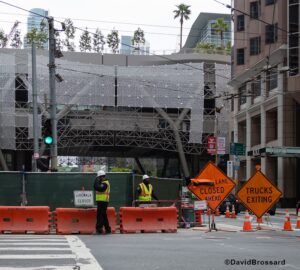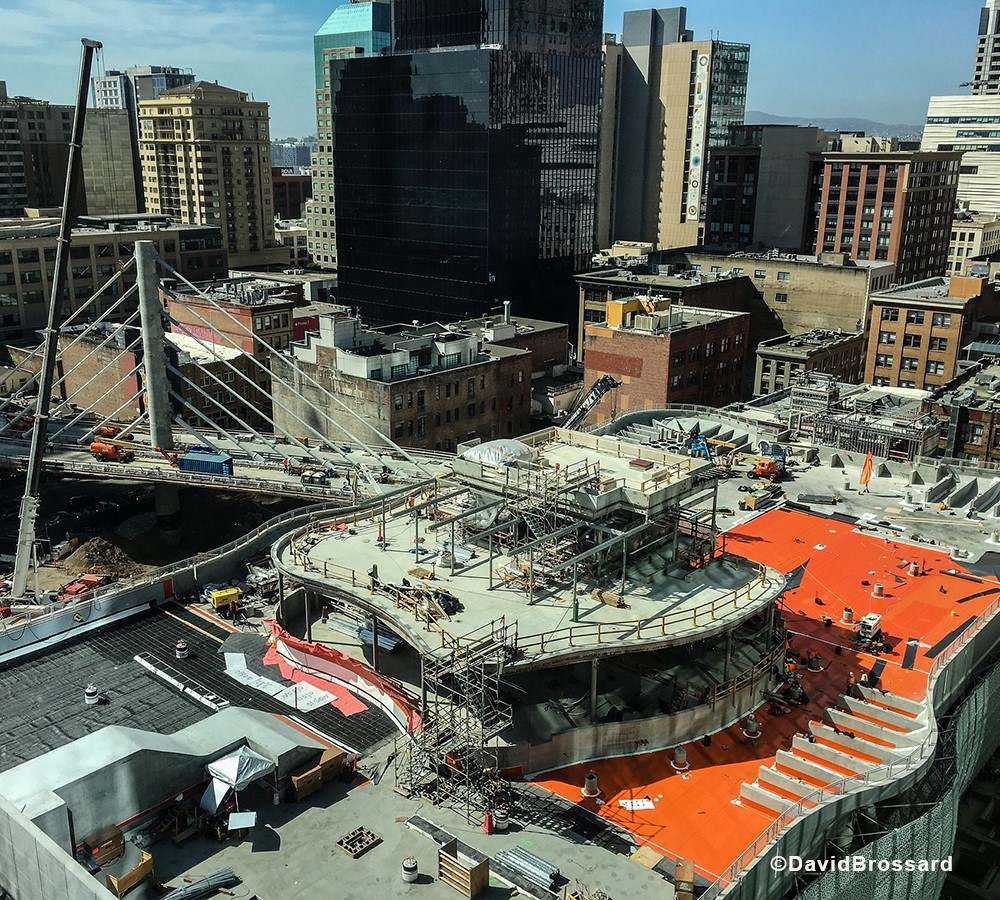Advocates for San Francisco’s Transbay Transit Center have never lacked a sense of grandiosity about their goals. “The ability to envision the future and to transform aspirations into reality is what sets leaders apart,” boasted a glossy brochure published by the joint powers authority in charge of the project. “No urban transit project in the world today exemplifies this fact better than the Transbay Program and the urban transformation it has created. It is on a par with the most important transportation projects in the world today.”
The brochure was titled, “Delivering on the Vision,” but thus far the $2.2-billion publicly funded building – a small portion of the overall predicted cost of the finished project – has delivered only embarrassing failures, lawsuits and empty promises. San Francisco officials envisioned Transbay as the “Grand Central Station of the West” – a New York City-like transit hub that would connect the 11 transit systems throughout the eight-county Bay Area and serve as a main station for the California High Speed Rail system when, or if, the state ever completes it.

The Transbay project, which broke ground 16 years ago, opened in 2018 and then shut down months later after a walkway crumbled along the center’s gee-whiz rooftop park – and then the subsequent discovery of two cracked structural beams. After the project overspent its budget, the city provided a $260-million bailout. Residents of a neighboring luxury high-rise condominium, the Millennium Tower, blamed Transbay tunnel construction for its sinking and tilting. Transbay denied that allegation, but agreed to help fix the foundation and paid a settlement to condo owners.
The terminal opened again in 2019 and has been (kind-of, sort-of) operating since then. Despite its innovative park, impressive terminal architecture and myriad restaurant and retail facilities, it seems more like a mausoleum than a bustling station. In April, the San Francisco Chronicle’s Carolyn Said reported on the terminal’s “eerie emptiness.” New York’s Grand Central Station serves 750,000 people a day and Transbay projects 100,000 riders a day. The Chronicle did a 3 p.m. to 4 p.m. count over several days and found only 107 to 232 visitors during that hour per day.
“Despite museum-worthy terrazzo floors and striking public artwork, the sweeping Grand Hall feels virtually deserted except for occasional commuters going to or from buses,” Said explained. Statistics show transit trips from one bus system running through the center at only 57% percent of pre-pandemic counts. Most bus riders using the city’s Muni buses as well as suburban bus systems have no need to linger in the Grand Hall as they quickly scurry to the bus terminals, thus leading visitors to wonder about the point of such grandness. The terminal’s only area with noticeable activity was the 35,000-square-foot private Fitness SF gym.
“Pre-pandemic, the bus passengers accounted for just under a fifth of what the massive structure ultimately can serve,” she added. “Right now, they make up less than a scant 5%. And, notably, there are no trains. As Supervisor Aaron Peskin once said, without rail connections, the $2.2-billion structure ‘looks like the most expensive bus terminal in the history of humankind.’” The newspaper’s headline said it all: “There are no people here.”
Perhaps it will more closely live up to expectations after officials find the money needed to route trains to the center. That task has become easier after the federal government recently earmarked $3.4 billion for a total project estimated to cost more than $8 billion. The locals still need to find matching funds for that new federal grant, however.
Maybe also the bullet train will save it. But as the Los Angeles Times reported on that project’s $100-billion (yes, billion with a “b”) shortfall to complete the line: “There is no set timeline for when anyone will be able to ride the entire 494-stretch from Anaheim to San Francisco. The current focus centers on the Central Valley, where officials estimate the 171-mile line from Merced to Bakersfield will be finished between 2030 and 2033.” But don’t worry: “California’s high-speed rail train could feature an indoor play area for children and seating options that would allow people to meet as a group or cocoon in a reading nook.”
The latter point epitomizes these visionary, multibillion-dollar transportation projects. Supporters boast about rooftop parks, stunning terminals and reading nooks in snazzy new bullet trains, but they neglect the main purpose of the projects – namely, efficiently transporting people to wherever it is they want to go. Transit planners focus on the snazzy stuff, but repeatedly fail at their most basic mission. Instead of focusing on cost efficiencies and supply and demand, they seem to follow the infrastructure advice of former San Francisco Mayor Willie Brown.
In his Chronicle column in 2013 regarding the Transbay Terminal’s then-$300-million cost overruns, Brown argued that, “In the world of civic projects, the first budget is really just a down payment. If people knew the real cost from the start, nothing would ever be approved. The idea is to get going. Start digging a hole and make it so big, there’s no alternative to coming up with the money to fill it in.” So, yes, San Francisco now has a $2.2 billion (and counting) terminal that isn’t that much more useful than having a giant hole near the Embarcadero. And Brown was right: There’s no turning back now.
But I’m left wondering about the kind of real-world transportation improvements the city could have made had it spent that money improving the city’s buses, rail routes and road systems rather than building a spectacular – and spectacularly empty – edifice.
Steven Greenhut is director of the Pacific Research Institute’s Free Cities Center.

